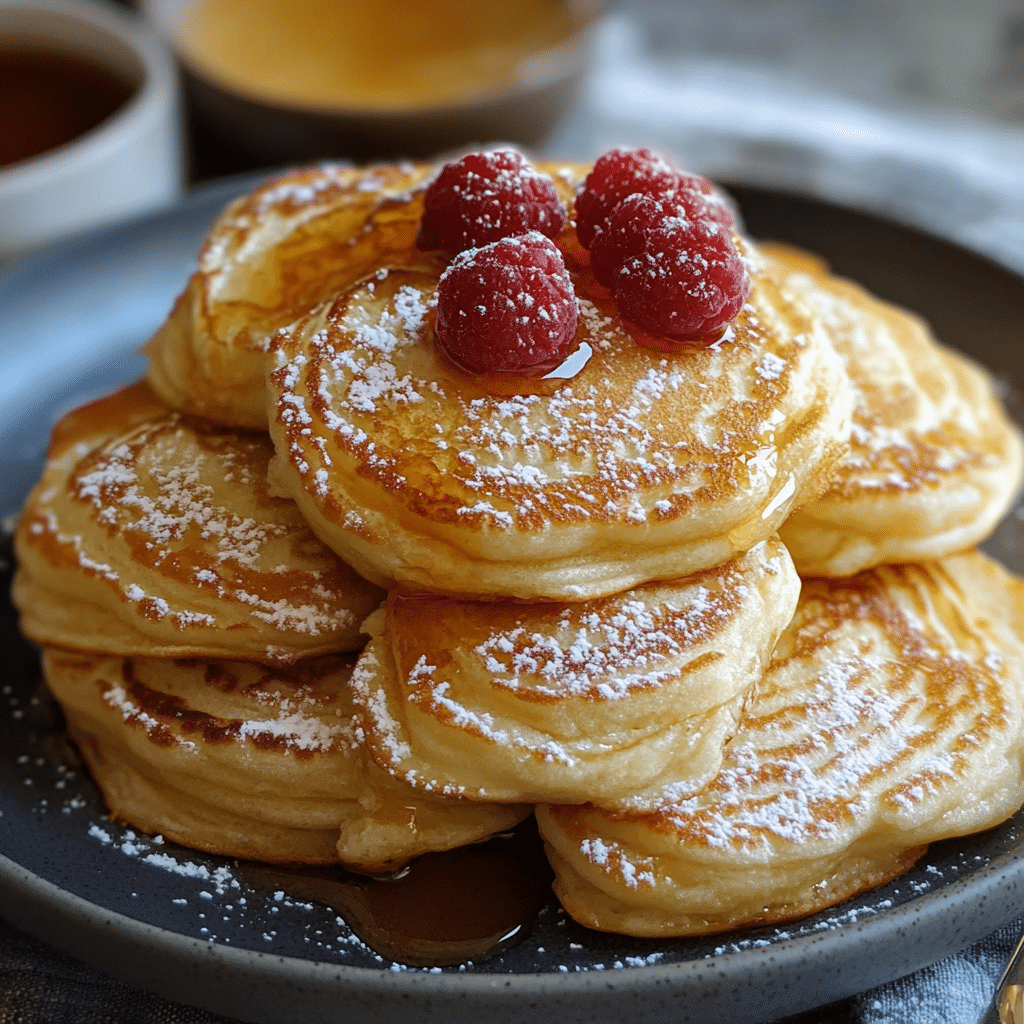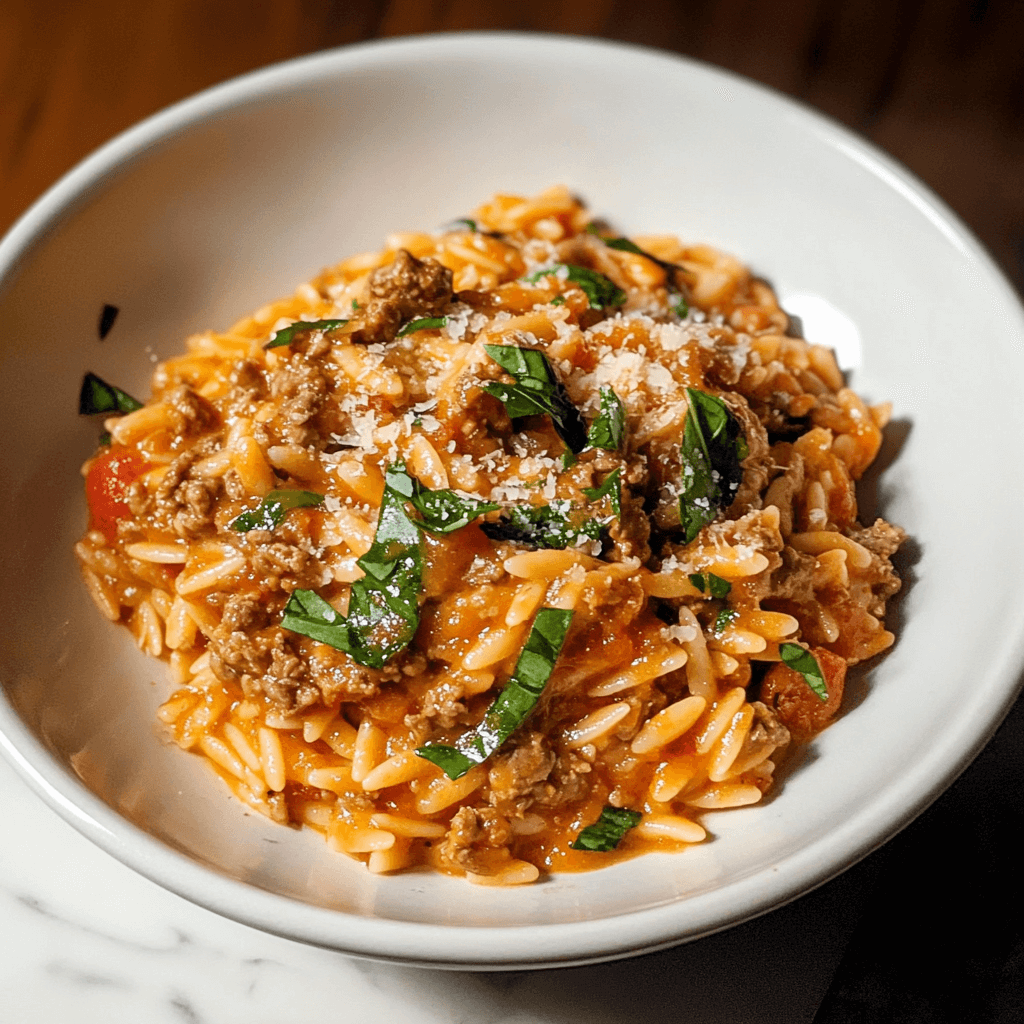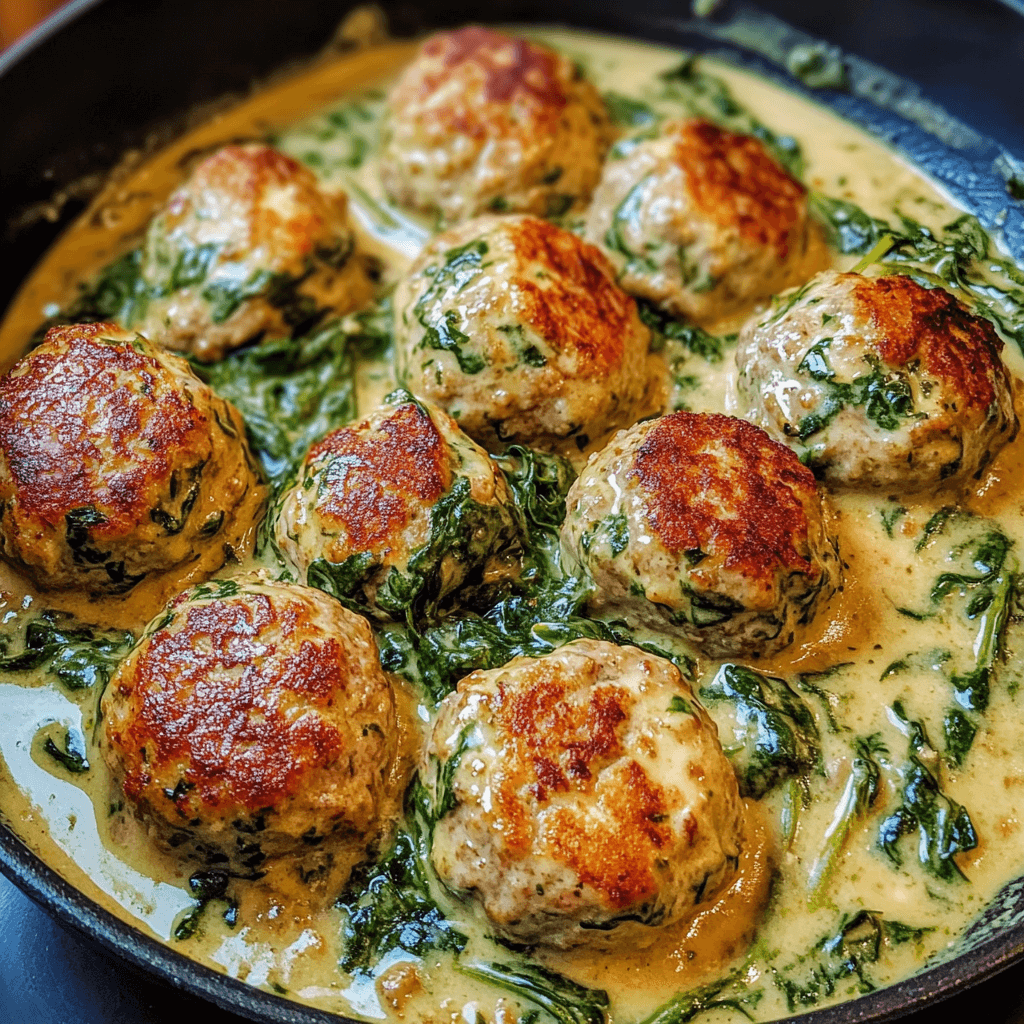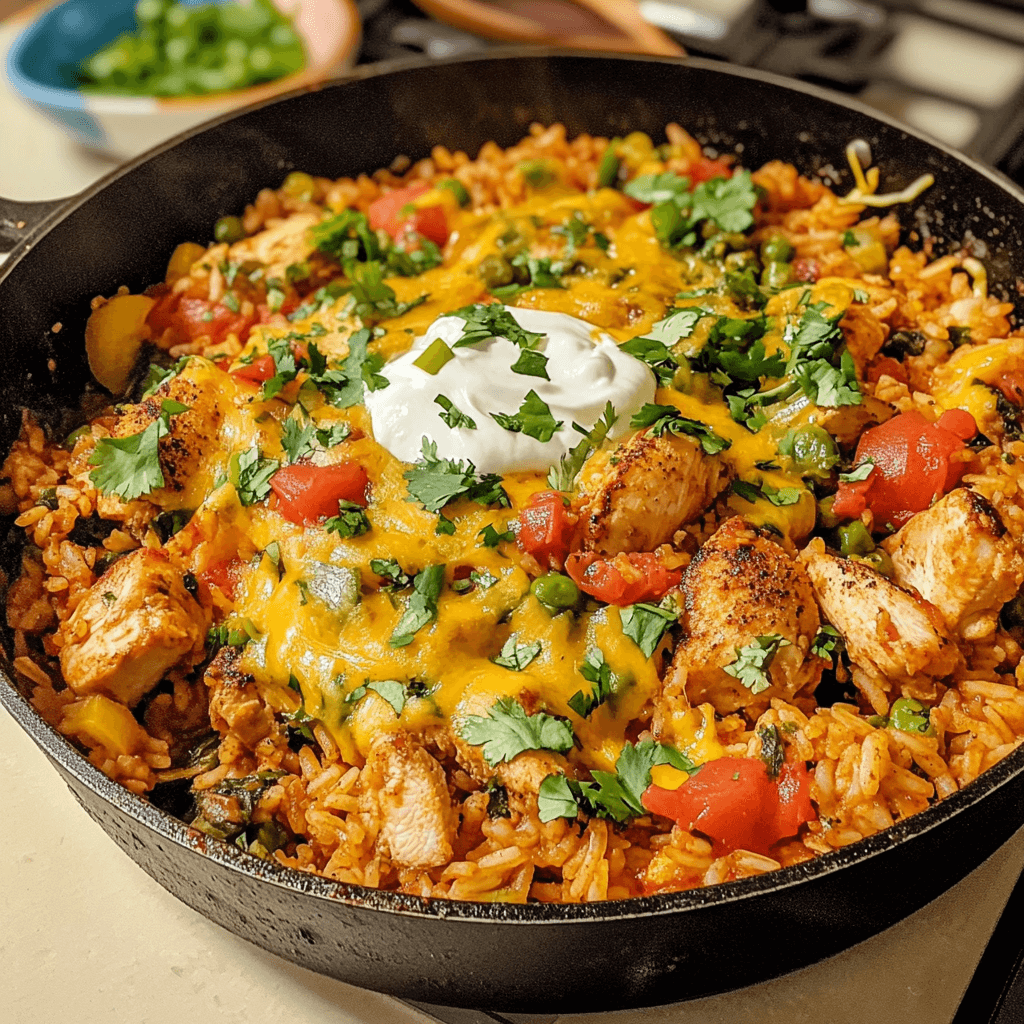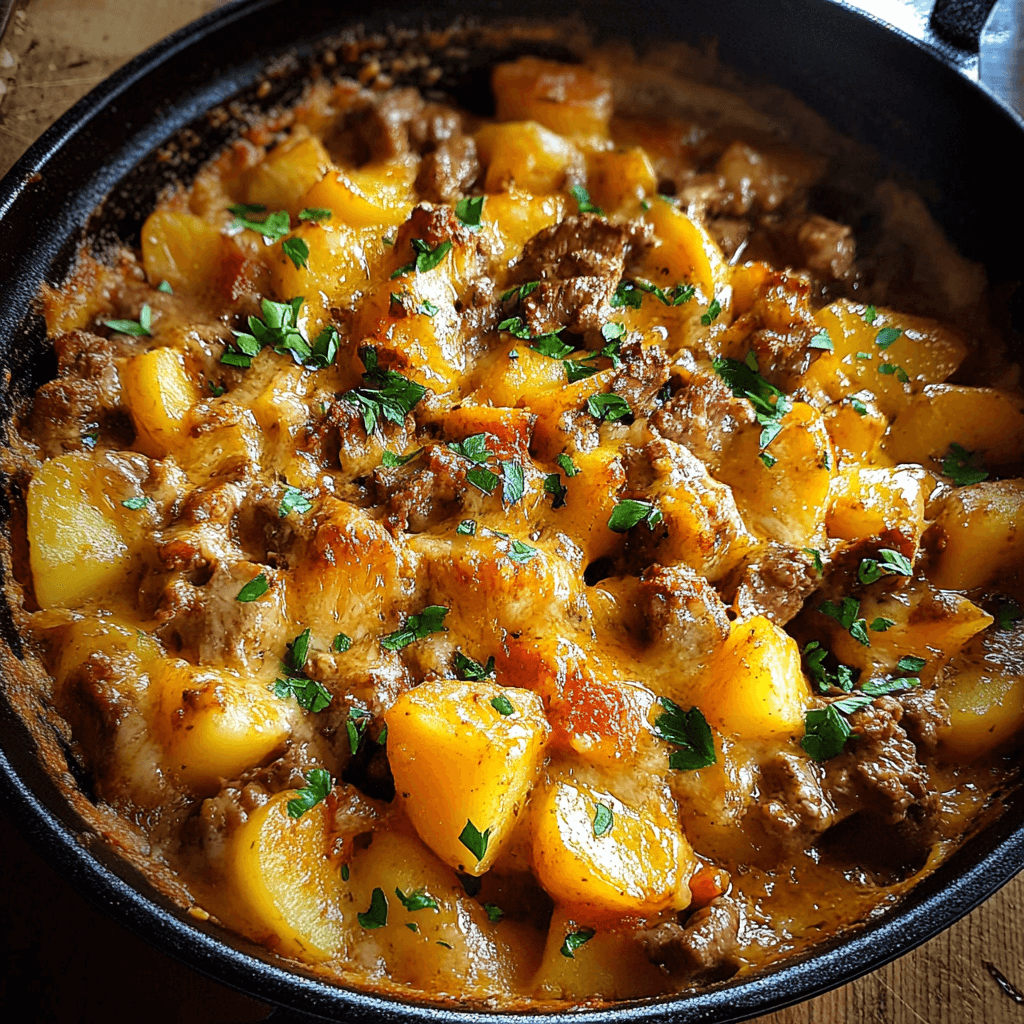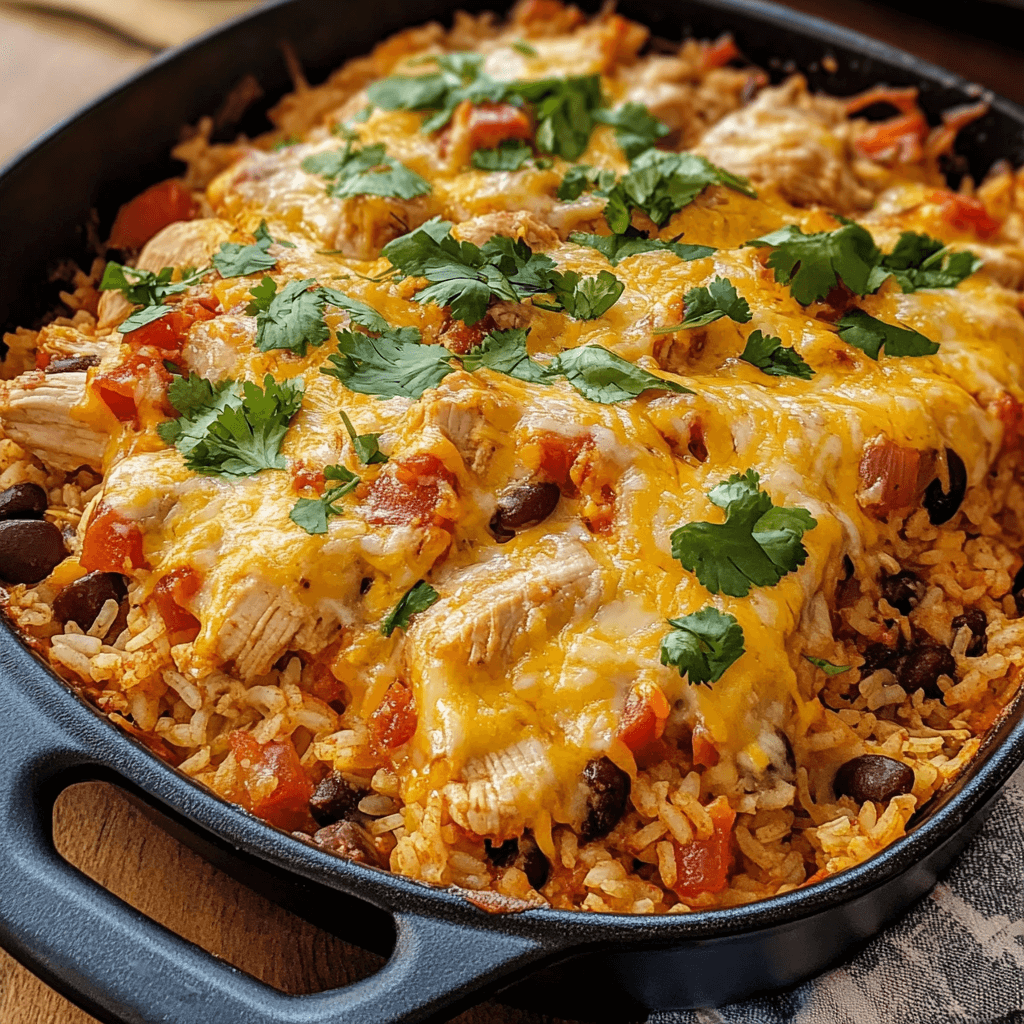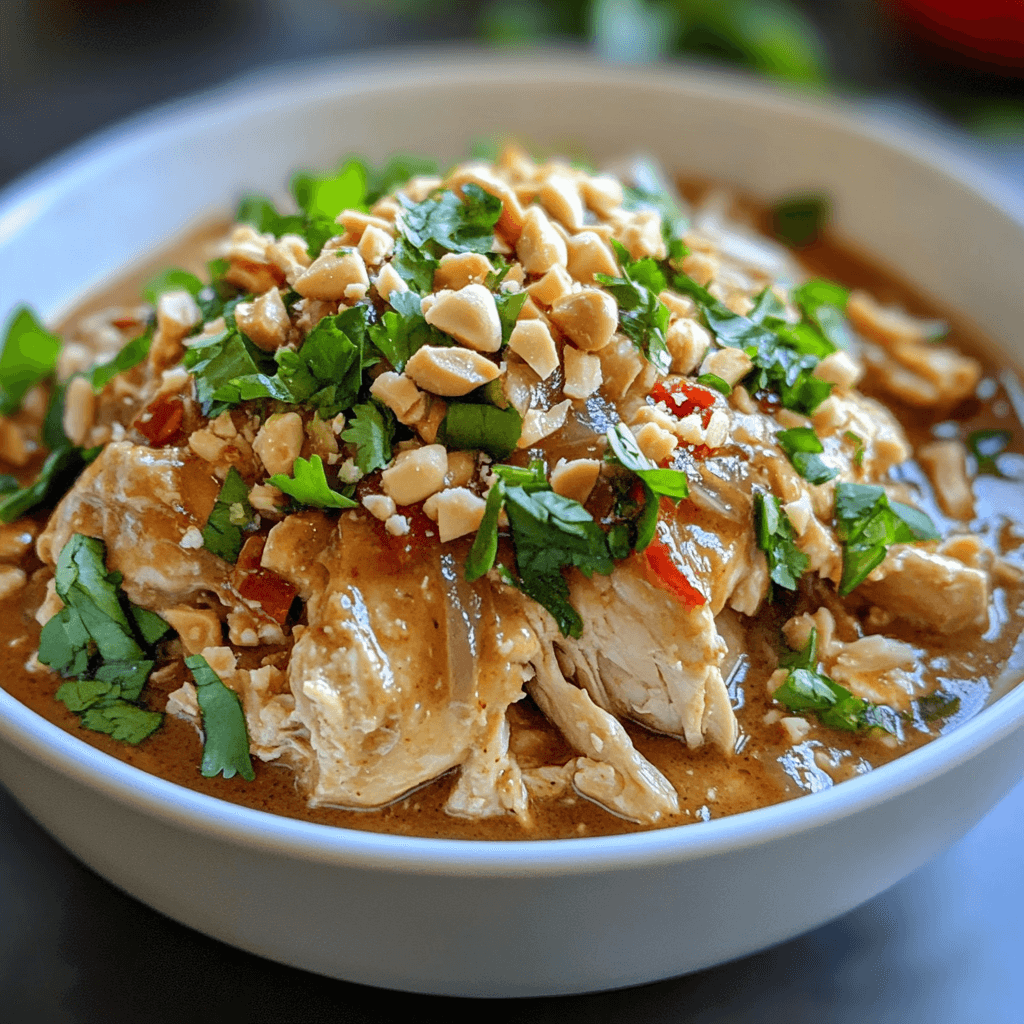Introduction
Imagine biting into a pancake that’s not only light and fluffy but also packed with layers of flavor and texture. Danish pancakes, also known as Æbleskiver (pronounced AEB-luh-skee-ver), are a beloved treat in Denmark. These small, spherical pancakes are crispy on the outside, soft and fluffy on the inside, and often filled with delicious fruit, chocolate, or jam. Traditionally enjoyed during the holiday season or at special gatherings, they are perfect for breakfast, brunch, or as a sweet snack to satisfy your cravings.
Danish pancakes are somewhat of a cross between a pancake and a doughnut hole, with a unique cooking method that makes them light and airy. Traditionally, they are cooked in a special pan with round indentations, creating their signature spherical shape. Served warm, they are often dusted with powdered sugar and accompanied by jam, fresh berries, or whipped cream.
In this article, we’ll explore everything you need to know about Danish pancakes: from the history and origin of the dish to step-by-step instructions on how to make them, tips for perfect results, and variations you can try to make these pancakes your own.
Why You’ll Love This Recipe
- Light and Fluffy: The texture of Danish pancakes is light and airy, offering a perfect balance of crispiness on the outside and fluffiness on the inside.
- Versatile: You can fill them with fruit, jam, or chocolate, or even serve them plain with a dusting of powdered sugar for a simple yet satisfying treat.
- Fun to Make: Cooking Danish pancakes is a fun experience, especially when using the traditional Æbleskiver pan. The process of flipping them to achieve their spherical shape is a satisfying skill to master.
- Perfect for Any Occasion: Whether you’re hosting a breakfast gathering, enjoying a cozy brunch, or celebrating a special holiday, Danish pancakes are sure to impress.
- Customizable: There are endless ways to customize the flavors of these pancakes, from the fillings to the toppings. You can go sweet, savory, or even spice things up with different flavor combinations.
Preparation Time and Servings
- Total Time: 45 minutes (10 minutes for prep, 35 minutes for cooking)
- Servings: This recipe makes about 24-30 Danish pancakes, depending on the size of your pan.
- Nutrition Facts (per serving, 3 pancakes): Calories: 200, Protein: 4g, Carbs: 30g, Fat: 8g.
Ingredients
For the Danish Pancakes:
- 1 cup all-purpose flour: Forms the base of the pancake batter.
- 2 tablespoons granulated sugar: Adds a touch of sweetness to the batter.
- 1 teaspoon baking powder: Helps make the pancakes light and fluffy.
- ½ teaspoon salt: Balances the sweetness of the batter.
- 2 large eggs: Provide structure and richness to the batter.
- 1 cup whole milk: Adds moisture and richness to the batter.
- 2 tablespoons melted butter: Adds flavor and helps create a crispy exterior.
- 1 teaspoon vanilla extract: Enhances the flavor of the batter.
- Butter or oil (for greasing the pan): For cooking the pancakes and achieving a crisp, golden exterior.
Fillings (Optional):
- Fruit jam (such as raspberry, strawberry, or apricot): For a traditional filling.
- Fresh berries (such as blueberries or raspberries): For an extra burst of freshness.
- Nutella or chocolate chips: For a rich, chocolatey version of Danish pancakes.
- Cinnamon sugar: For a warm, spiced twist.
- Apple slices (optional): For a fruity and hearty filling.
Serving:
- Powdered sugar: To dust on top for added sweetness and presentation.
- Whipped cream: For a rich, creamy accompaniment.
- Maple syrup: For a drizzle of classic sweetness.
First Step: PREPARE THE PANCAKE BATTER
- Mix the Dry Ingredients: In a large mixing bowl, combine the all-purpose flour, sugar, baking powder, and salt. Whisk the dry ingredients together to ensure they’re evenly distributed.
- Combine the Wet Ingredients: In a separate bowl, whisk the eggs, milk, melted butter, and vanilla extract until fully combined.
- Add the Wet to the Dry: Slowly pour the wet ingredients into the dry ingredients, stirring gently as you go. Mix until the batter is just combined. Be careful not to overmix, as this can result in dense pancakes.
- Let the Batter Rest: Allow the batter to rest for about 5-10 minutes. This helps it thicken slightly and ensures a fluffier texture when cooking.
Second Step: COOK THE DANISH PANCAKES
- Prepare the Æbleskiver Pan: Danish pancakes are traditionally cooked in a special pan called an Æbleskiver pan, which has round indentations for cooking the pancakes in their signature spherical shape. If you don’t have an Æbleskiver pan, you can use a mini muffin tin or a similar pan with round cups, but the results won’t be exactly the same. Lightly grease the Æbleskiver pan with butter or oil. Make sure each indentation is well-greased to prevent sticking.
- Heat the Pan: Place the Æbleskiver pan over medium heat and let it warm up for a few minutes. You want the pan to be hot, but not smoking.
- Pour in the Batter: Once the pan is hot, spoon or pour about 1-2 tablespoons of batter into each indentation. If you’re adding a filling, place a small dollop of fruit jam, Nutella, or chocolate chips in the center of each pancake after adding the batter.
- Cook the Pancakes: Let the pancakes cook for about 1-2 minutes, or until the edges start to set and the bottom is golden brown.
- Flip the Pancakes: The fun part of cooking Danish pancakes is flipping them. Using a skewer, fork, or chopstick, carefully flip each pancake. Turn them in the pan until they are fully cooked and golden brown on all sides. This typically takes another 2-3 minutes.
- Repeat: Continue cooking the pancakes in batches until all the batter is used. Make sure to grease the pan lightly between batches to prevent sticking.
Third Step: SERVE AND ENJOY
- Serve Warm: Once the pancakes are cooked, remove them from the pan and place them on a serving plate. Dust the Danish pancakes with powdered sugar for an extra touch of sweetness.
- Add Toppings: Top your pancakes with whipped cream, fresh berries, and a drizzle of maple syrup, or serve them with additional jam or Nutella for an indulgent treat.
- Enjoy: These Danish pancakes are best served warm, right after cooking. The crispy exterior and soft, fluffy interior will make every bite a delicious experience.
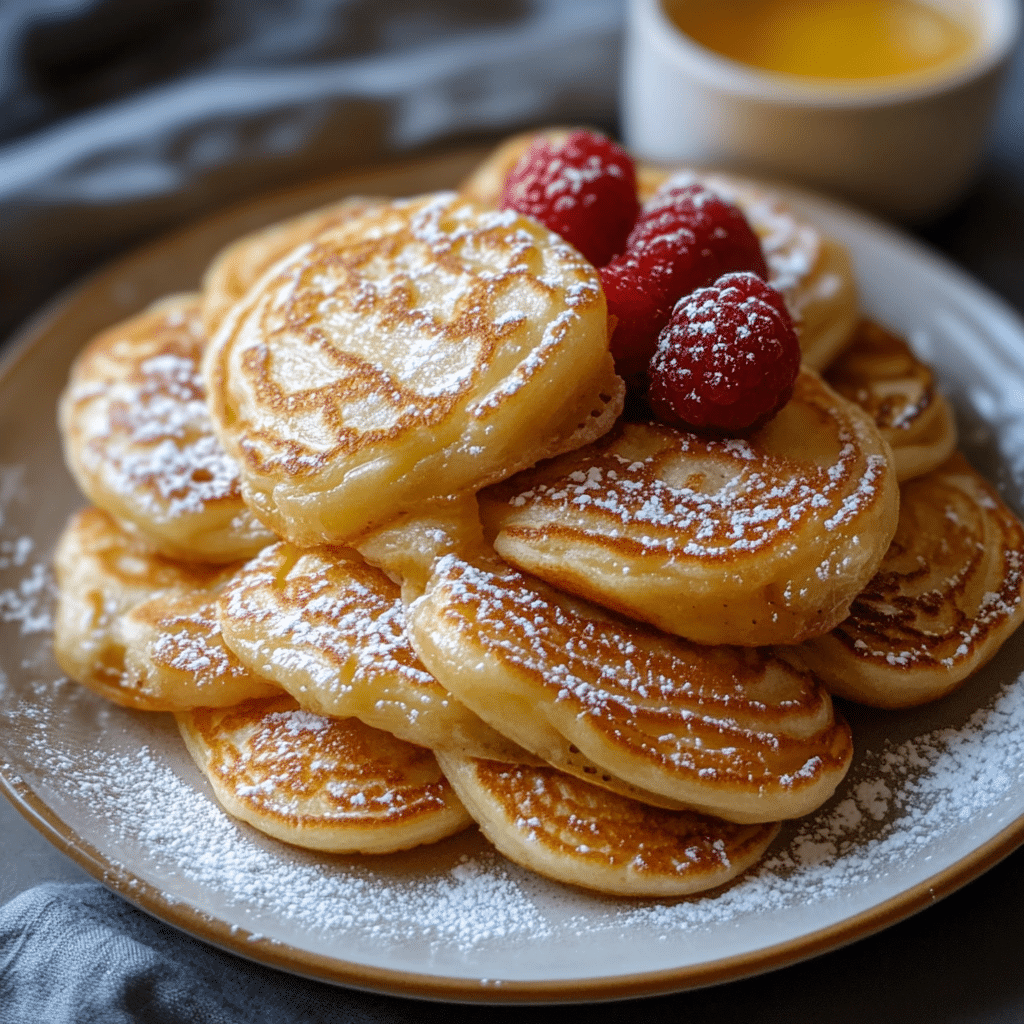
How to Serve Danish Pancakes
Danish Pancakes are a versatile dish that can be enjoyed in a variety of ways. Here are some great serving suggestions:
1. As a Breakfast or Brunch Dish
These pancakes make an excellent breakfast or brunch option. Serve them alongside fresh fruit, scrambled eggs, and bacon for a complete meal, or pair them with a hot cup of coffee or tea for a light but satisfying morning treat.
2. As a Dessert
For a sweet treat after dinner, serve Danish pancakes as a dessert. Top them with vanilla ice cream or a dollop of whipped cream, and drizzle with chocolate sauce or fruit syrup for a more indulgent option.
3. For Holiday Gatherings
Danish pancakes are often served during the holiday season, particularly around Christmas and New Year’s. These little treats make a festive and fun addition to any holiday spread.
4. As a Snack
Since they’re easy to make and customizable, Danish pancakes are also perfect for a quick snack. Keep a batch ready in the fridge and heat them up with a sprinkle of cinnamon sugar or a spoonful of jam for a comforting afternoon pick-me-up.
Recipe Variations
While Danish Pancakes are delicious as written, you can experiment with different flavors, fillings, and toppings to make them your own. Here are some ideas for variations:
1. Fruit-Filled Pancakes
For a fruity twist, try adding fresh berries such as blueberries, raspberries, or blackberries inside the pancakes, or drizzle fruit syrup over the pancakes once they are cooked. You can also fill them with fruit preserves, like strawberry or apricot jam.
2. Nutella or Chocolate Danish Pancakes
If you have a sweet tooth, try filling the pancakes with Nutella or mini chocolate chips for a rich, chocolatey treat. You can also drizzle melted chocolate over the top for an extra indulgence.
3. Cinnamon Sugar Danish Pancakes
For a spiced-up variation, mix cinnamon and sugar together and sprinkle it over the pancakes as they cook. This gives the pancakes a warm, cozy flavor perfect for the colder months.
4. Savory Danish Pancakes
While Danish pancakes are traditionally sweet, you can make a savory version by filling them with cheese, ham, or sautéed vegetables. Serve with a side of sour cream or a tangy dipping sauce for a unique twist on this classic dish.
5. Vegan or Gluten-Free Danish Pancakes
To make these pancakes vegan, substitute the eggs and dairy with plant-based alternatives like flax eggs and almond milk. For a gluten-free version, swap the all-purpose flour with a gluten-free flour blend or rice flour.
Tips for Perfect Danish Pancakes
- Grease the Pan Well: To ensure the pancakes cook evenly and don’t stick to the pan, make sure to grease the Æbleskiver pan generously with butter or oil before cooking each batch.
- Don’t Overfill the Indentations: Only fill the indentations halfway with batter, especially if you plan to add a filling. Overfilling can cause the batter to spill out and make flipping difficult.
- Keep the Pancakes Warm: If you’re making a large batch, keep the cooked pancakes warm in a low oven (around 200°F or 90°C) until you’re ready to serve.
- Practice the Flip: Flipping Danish pancakes takes a bit of practice. Don’t worry if they don’t come out perfectly the first time—just keep trying! Use a fork, skewer, or chopstick to gently turn the pancakes over.
- Serve Immediately: Danish pancakes are best enjoyed right after they’re cooked while they’re still warm and fluffy. If you need to make them ahead, store them in an airtight container and reheat them in the oven or microwave before serving.
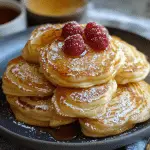
Danish Pancakes: A Deliciously Light and Fluffy Treat
- Total Time: 45 minutes
Description
Fluffy, delicate, and sweet, Danish pancakes (also known as Æbleskiver) are a fun twist on traditional pancakes. These small, round treats are lightly crisp on the outside and soft on the inside, often filled with jam or fruit. Served with powdered sugar or syrup, they make for an adorable breakfast or brunch treat everyone will love.
Ingredients
For the Danish Pancakes:
- 1 cup all-purpose flour: Forms the base of the pancake batter.
- 2 tablespoons granulated sugar: Adds a touch of sweetness to the batter.
- 1 teaspoon baking powder: Helps make the pancakes light and fluffy.
- ½ teaspoon salt: Balances the sweetness of the batter.
- 2 large eggs: Provide structure and richness to the batter.
- 1 cup whole milk: Adds moisture and richness to the batter.
- 2 tablespoons melted butter: Adds flavor and helps create a crispy exterior.
- 1 teaspoon vanilla extract: Enhances the flavor of the batter.
- Butter or oil (for greasing the pan): For cooking the pancakes and achieving a crisp, golden exterior.
For the Fillings (Optional):
- Fruit jam (such as raspberry, strawberry, or apricot): For a traditional filling.
- Fresh berries (such as blueberries or raspberries): For an extra burst of freshness.
- Nutella or chocolate chips: For a rich, chocolatey version of Danish pancakes.
- Cinnamon sugar: For a warm, spiced twist.
- Apple slices (optional): For a fruity and hearty filling.
For Serving:
- Powdered sugar: To dust on top for added sweetness and presentation.
- Whipped cream: For a rich, creamy accompaniment.
- Maple syrup: For a drizzle of classic sweetness.
Instructions
First Step: PREPARE THE PANCAKE BATTER
- Mix the Dry Ingredients: In a large mixing bowl, combine the all-purpose flour, sugar, baking powder, and salt. Whisk the dry ingredients together to ensure they’re evenly distributed.
- Combine the Wet Ingredients: In a separate bowl, whisk the eggs, milk, melted butter, and vanilla extract until fully combined.
- Add the Wet to the Dry: Slowly pour the wet ingredients into the dry ingredients, stirring gently as you go. Mix until the batter is just combined. Be careful not to overmix, as this can result in dense pancakes.
- Let the Batter Rest: Allow the batter to rest for about 5-10 minutes. This helps it thicken slightly and ensures a fluffier texture when cooking.
Second Step: COOK THE DANISH PANCAKES
- Prepare the Æbleskiver Pan: Danish pancakes are traditionally cooked in a special pan called an Æbleskiver pan, which has round indentations for cooking the pancakes in their signature spherical shape. If you don’t have an Æbleskiver pan, you can use a mini muffin tin or a similar pan with round cups, but the results won’t be exactly the same.
Lightly grease the Æbleskiver pan with butter or oil. Make sure each indentation is well-greased to prevent sticking.
- Heat the Pan: Place the Æbleskiver pan over medium heat and let it warm up for a few minutes. You want the pan to be hot, but not smoking.
- Pour in the Batter: Once the pan is hot, spoon or pour about 1-2 tablespoons of batter into each indentation. If you’re adding a filling, place a small dollop of fruit jam, Nutella, or chocolate chips in the center of each pancake after adding the batter.
- Cook the Pancakes: Let the pancakes cook for about 1-2 minutes, or until the edges start to set and the bottom is golden brown.
- Flip the Pancakes: The fun part of cooking Danish pancakes is flipping them. Using a skewer, fork, or chopstick, carefully flip each pancake. Turn them in the pan until they are fully cooked and golden brown on all sides. This typically takes another 2-3 minutes.
- Repeat: Continue cooking the pancakes in batches until all the batter is used. Make sure to grease the pan lightly between batches to prevent sticking.
Third Step: SERVE AND ENJOY
- Serve Warm: Once the pancakes are cooked, remove them from the pan and place them on a serving plate. Dust the Danish pancakes with powdered sugar for an extra touch of sweetness.
- Add Toppings: Top your pancakes with whipped cream, fresh berries, and a drizzle of maple syrup, or serve them with additional jam or Nutella for an indulgent treat.
- Enjoy: These Danish pancakes are best served warm, right after cooking. The crispy exterior and soft, fluffy interior will make every bite a delicious experience.
- Prep Time: 10 minutes
- Cook Time: 35 minutes
Nutrition
- Calories: 200 kcal
- Fat: 8g
- Carbohydrates: 30g
- Protein: 4g
Conclusion
Danish Pancakes are a delightful and fun treat that everyone will enjoy. Their light, fluffy texture and customizable fillings make them a versatile dish suitable for breakfast, brunch, dessert, or even as a snack. Whether you’re making them for a special occasion or just craving something sweet, these pancakes will surely impress with their unique shape and delicious flavor.
By following the simple steps outlined above, you’ll be able to make perfect Danish pancakes every time. Experiment with different fillings and toppings, and you’ll soon find your favorite version of this classic Danish treat. Give them a try today and enjoy the sweet, satisfying taste of Denmark in your own kitchen!

